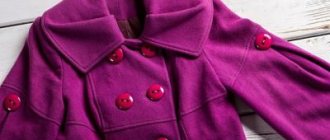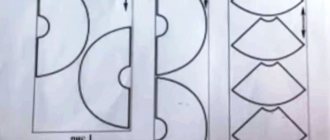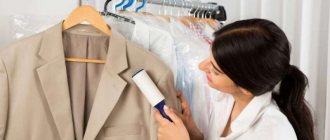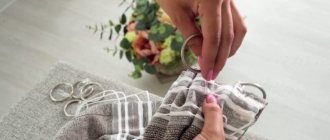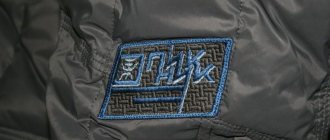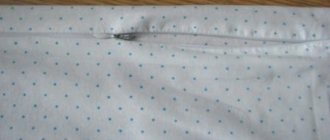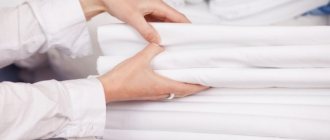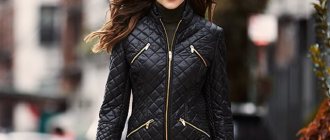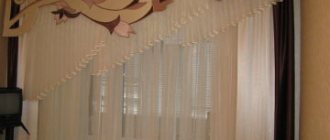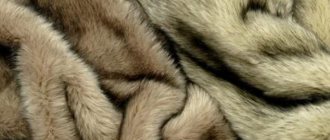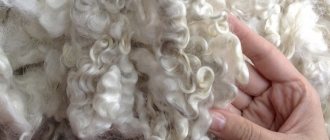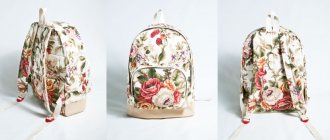- November 17, 2018
- Needlework
- Legina Marina
There are moments when you want to express yourself in some special way, to create something new. Embroidery, macrame, all this is good, but has no practical meaning. And sometimes you really want the product of your creativity to be useful for family members! Why not learn how to felt felt boots? This makes it possible to give warm shoes to all family members and receive the title of a true master.
Today felt boots are not in fashion...
This is what capricious girls can say, referring to their grandfather’s old shoes. It was warm and very practical, especially with galoshes, but it was not particularly beautiful. But today the approach to making shoes has changed, although the very principle of how to felt felt boots has remained the same.
Now they are more like boots with beaded or rhinestone embroidery, with fur trim and rubber soles. Of course, you most likely won’t be able to create a work of art the first time, but it’s worth a try. However, the shoes will still be practical. Next time it will come out much more beautiful.
What are they?
Classic felt boots have retained their design until today. As a rule, these are high boots made of wool with leather or rubber soles, which help avoid rapid wear. Sometimes such shoes are worn together with galoshes to protect them from getting wet, because thin wool tops do not have water-repellent properties. However, today you can increasingly find shortened or decorated versions, for example, decorated with fur elements or painting, rhinestones, stones and appliqués.
The boots are made from sheep's wool, which tends to be very dense, which creates the desired effect. The shoes retain internal heat, but at the same time allow air to pass through well, which prevents your feet from sweating and sweating. Wool material is resistant to moisture, although you need to understand that you can’t walk through puddles in felt boots - they are more suitable for walking in dry snow.
With the advent of the popularity of the rustic style, designers began to increasingly use rural motifs in their new collections. Of course, they did not ignore felt boots: now felt boots from the past are a trend for the next few years and perhaps the most popular shoes for creating an urban look. Both classic models with national designs and ornaments, as well as modified ones with modern designs, have come into fashion.
A little theory
Before you start creating a masterpiece, you need to have a good understanding of how wool felting occurs, because this is the basis of the winter shoes in question. Due to what does the material change its properties and form dense felt? It's all about the structure of the wool itself. Remember the demonstration of split ends. Their open scales stick out in all directions. So the wool looks the same way.
For this reason, our hair forms tangles that are difficult to comb. But what is bad for a hairstyle looks completely different here. It is this structure that allows you to create toys, clothes, carpets and much more from felt. Since felting boots can be made from any wool, you can choose whatever is on sale. It can be alpaca or camel wool, cashmere or angora. The cost of the product in this case will vary, so choose at your own discretion.
Industrial technology
Previously, felting felt boots was done exclusively by hand. To do this, the craftswoman took special tools and already prepared lasts for the shoe size, and then began processing the wool. Nowadays, a lot has changed, and old sewing technologies are not suitable for production on an industrial scale. However, the process is not fully automated and some of the work is still done by humans.
Making felt boots is a rather interesting process. Before going on sale, boots go through the following stages:
- First, wool is purchased, usually sheep. It is sorted by hand, oiled and sent to the carding shop.
- Special devices carefully comb out debris (blades of grass, dirt, etc.) from the material. At the exit, the wool is wound on a special roller.
- The man starts working again. It is necessary to steam all the fibers - they must be well heated with hot air.
- Factory workers manually form the shape of the felt boots. At this stage, the fur takes on its familiar shape. Experienced specialists make the shape by eye, and if the master is just starting to work, then a special pattern will help him.
- The workpiece is again steam-treated and then sent to a special rolling machine. After using this device, the wool fibers adhere tightly to each other.
- Then again hand work - giving the wool a clearer silhouette of the boot. At this stage, the felt boots look very large - clearly not big enough for a human foot.
- The blanks fall into a drum of water, where the same wool felting takes place, after which the shoes are named.
- The boots are cut on other machines, and after that the production workers take them on again. They stretch the workpieces, and then “set” them on special blocks, which help to give the exact shape and size.
When the felt boots acquire their classic look, they are sent to dry. After this, a formal determination of the intermediate size, selection of a pair and gluing of the sole takes place. At this stage, you can start decorating the product, but in general the felted boots are ready.
Wool is sorted by hand
Special devices carefully comb out debris from the material
Oiled and sent to the carding shop
At the exit, the wool is wound on a special roller
The fibers are passed under steam
Factory workers manually form the shape of felt boots
The workpiece is again steam-treated and sent to a special rolling machine
Giving wool a clearer boot silhouette
The blanks fall into a drum with water, where wool felting takes place
Boots are beaten on machines
Stretching workpieces using a machine
Felt boots are put on special lasts and sent to the oven to dry.
What awaits you
If you are going to felt felt boots from wool, then get ready to find many sources in which this process will be called and described differently (felting, also known as felting, felting). You can find other, less common names. But all this is characterized in one way: the creation of products from wool, scattered hairs, which turn into a dense and very durable material. There are a huge number of felting methods. You can use the dry and wet method, the nuno-felt technique or felting of knitted substances. Let's take a look at the most common options.
Dry felting technique
It appeared much later than the wet method. Beginners may find it more difficult, but this is a matter of habit. You can felt felt boots from wool using a regular needle. In this case, the production of shoes occurs in a prefabricated manner. After making the blanks, they will have to be sewn onto a fabric base.
A felting needle is essentially a hook. Anyone who has knitted remembers this tool. Only here it is equipped with small notches. The technique is as follows:
- You will need a fabric shoe pattern and a base sole. Glue them together and stitch along the edge. Now you can get to work.
- Separate the wool. Rub it between your palms a little, tangling the fibers. Roll into a tight cylinder.
- Let's start the felting process. We insert the needle deeply and gradually rotate the cylinder, simultaneously compacting it. When the cylinder no longer deforms during compression, the process can be considered complete. The result is a dense piece that can be sewn to a fabric base, after which you move on to the next cylinder.
Felting felt boots from wool in this way is a rather time-consuming process. If there are no problems with this resource, then you can master the technique of dry felting. After completing the work, you need to moisten the product with soapy water and smooth all the joints well. Young mothers will especially like this method of creativity. Using simple techniques, you can create soft toys and delight your children with them.
Kinds
There are several types of felt, which are distinguished by the quality of the material, the purpose of its manufacture and further scope of application.
Needle punched (or furniture)
Dense (200-1600 g/m²) and quite thick (up to 1 cm) material, which is most often used as upholstery in the production of upholstered furniture. Read about Instroy furniture fabrics in this material.
It is a more wear-resistant alternative to batting and comes in many colors.
Yurt
It is made exclusively from natural wool fabric and is used to build yurts. Thanks to its high density, it retains heat well inside the home.
Thermal felt
It is a combination of artificial (acrylic or polypropylene) and natural (wool, linen, jute) fibers. As a rule, the part of synthetic raw materials does not exceed 40%, but each manufacturer independently decides on the percentage of components. Most often, this type of material is used to make mattresses - due to their density, thickness, and environmental friendliness, they are comfortable and durable.
Thick artificial felt
It is made entirely of polyester or polypropylene, and no weaving techniques are used during the production process - the fibers are connected to each other using glue and heat. This material is resistant to moisture, is highly flexible and elastic, and is not susceptible to rot, so it is used for both technical and domestic purposes.
Technical pure wool and its thickness
It is characterized by roughness and large thickness of the canvas (up to 3 cm). In the production process of such fabrics, low-grade varieties of wool are used, so various inclusions may be present on the surface or in the cut of the sheet, which is not a violation of the standard. There is also fine-wool technical felt, which is used to create electrical parts.
Technical coarse felt is necessary for manufacturing in the construction and engineering industries for the manufacture of insulation, gaskets, filters, and seals.
Properties of construction
It is made from coarse low-grade wool, waste from the wool industry, as well as flax tow (its specific gravity should not exceed 10%). For stronger adhesion of the fibers, it is allowed to add glue during the felting process. High-quality construction felt has a uniform structure, the same thickness over the entire area of the canvas, and does not emit a rotten or sour odor. This material is easy to cut and lay on any surface.
Shoe
It is used to make shoes and their various elements - soles, uppers, linings.
Sweat and yoke
It is used for the production of saddlery parts, for example, clamp elements, saddles, and various gaskets.
Felt - wool material
A special type of felt. Both materials are made according to the same principle, but if coarser, stiffer wool is used for felt, felt is made from soft types - fox, hare, rabbit, as well as a mixture of sheep raw materials with the downy component of the skins of small animals.
There are synthetic types of wool made from acrylic or polyester. Non-natural material is not of high quality; it is very rigid and difficult to bend, but at the same time holds its shape well. The use of felt is widespread in many areas of industry - automotive (for the production of seals, filters, polishing materials, various parts, interior upholstery), furniture (upholstery, insulation of upholstered furniture), light goods (clothing, shoes, bags, jewelry, interior items, children's goods), as well as in handicrafts. This link will tell you about the description of corduroy furniture fabric.
Filtz
A type of felt made by dry felting. To make it, wool fibers are mixed with a special serrated needle, as a result of which the wool is tangled, layer by layer, forming a fabric. This material is used in construction, mechanical engineering, in the production of musical instruments, dentistry (for grinding enamel), in the equestrian industry, in tailoring, and in the manufacture of interior parts.
Tips for Newbies
Adhere to the following rules:
- When pulling wool from the combed strip, first rub it between your palms. Then the fibers will become tangled, and further work will be much easier.
- Determine whether the required density has been achieved. To do this, just squeeze it in your hand. If the product returns to its previous shape, then everything was done correctly. But you shouldn’t be zealous beyond measure, otherwise the fibers will begin to tear.
- When felting large items, you can use the cheapest wool for the inside. Some people take padding polyester, but this option is not recommended. Of course it's very cheap. But the products will not have the same properties as wool products.
Application
Felting felt boots is an amazing, creative process that quickly becomes addictive. And, of course, I want to make shoes not only warm and practical, but also beautiful. You can distinguish applique as a subtype of dry felting. In this case, we simply roll the wool onto some base. The easiest way to do this is on a felt or wool base. Using wool you can decorate clothes, giving new life to old things. Now let's look at the classic wet felting technique.
Features, characteristics of natural felt, what it looks like
Felt is a woolen, dense, slightly rough material with slightly protruding pile. It is very warm, cuts easily and without shedding, and may vary in thickness.
Real felt consists of sheep (less often goat) wool. Sometimes raw materials obtained from rabbits are used - in this case we are talking about a subspecies of felt, felt, from which hats and various accessories are made.
It is not uncommon to find an artificial analogue of felt on the market, which is made from polypropylene. Products made from such material are cheaper, but do not allow air to pass through well, causing excessive sweating, but at the same time they do not warm well.
Main properties of natural felt:
- Environmentally friendly - the material does not contain toxic substances, so it cannot harm humans.
- Thermal insulation. Felt fabric absorbs and removes moisture well and retains heat well. That is why felt boots are considered the warmest shoes, and walls insulated with felt ensure a normal level of humidity in the room.
- Antibacterial abilities - bacterial microflora or pathogenic fungal organisms do not multiply in felted wool fabrics.
- Lightness, which makes the material universal.
- Wear resistance.
Depending on the raw materials used in the production of felt, the fabrics can be:
- pure wool – made from wool;
- half-woolen - in addition to wool, other fibers are added that were not involved in the felting process;
- mineral - made from felt-like mineral raw materials.
Based on the quality of the fibers, the material is divided into:
- Fine-wool – widely in demand in the clothing and footwear industries, as well as the furniture industry and radio electronics. The highest quality fine wool felt is made from Australian Merino fleece. It is used for the manufacture of clothing items, accessories, interior design details, bath sets, and furniture elements. According to technological requirements, the density of the material must correspond to 0.32 (±0.02) g/cm³ and consist of natural fine sheep wool (60%), natural semi-fine sheep wool (15%), as well as fine and semi-fine wool tow, wool fine and semi-fine fur (up to 25%). No substitution of raw materials is allowed, except for the replacement of natural semi-fine wool with natural fine wool.
- Coarse-haired - marked GPrA. It is distinguished by its looseness, large thickness (up to 2.5 cm), high heat-saving and noise-insulating properties. The main components are coarse sheep and cow wool, as well as admixtures of factory and regenerated wool. It is used mainly in the engineering industries, as well as in construction.
- Semi-coarse wool - made for technical purposes, consists of the same components as coarse wool, but undergoes more thorough processing. Density – 0.28-0.34 g/cm³.
Advantages and disadvantages of textile fiber
Felt products are popular due to a number of advantages:
- safety;
- practicality;
- softness, lack of discomfort during operation;
- good heat retention;
- high air throughput;
- excellent noise and sound insulation;
- mildew resistance;
- durability;
- Possibility of use in various fields for the manufacture of a wide variety of interior items or clothing.
However, the material is not without its drawbacks, including high absorbent properties, shrinkage, and susceptibility to moth attack. This article will tell you about canvas fabric.
Modern felt production involves coating the material with lanolin, which can cause allergic reactions in people sensitive to this substance.
Production technology, material production: what is it made from?
In the old days, felt production was carried out by people with special knowledge. They laid out the wool that had been selected and cleared of various debris in a thin layer, after which they exposed it to boiling water or steam to completely clean the raw material of contaminants. After drying, the wool was laid out on sheets and periodically moistened with water to ensure complete adhesion of the fibers. The canvases had to be systematically folded and unrolled - thus the fibers fell off, turning into a homogeneous mass.
Today the technological process looks like this:
- Loosening of raw materials using pinching and scooping devices.
- Placing the prepared material into mixing equipment, where the process of oiling and mixing occurs.
- Combing on carding machines. During this processing, layers are superimposed and a web of the required dimensions is gradually formed.
- Compaction of the resulting base using equipment equipped with movable plates heated to a certain temperature.
- Impregnation with acid or alkaline solution.
- Rolling the canvas to the required thickness, density, size.
- Painting.
- Finishing of the workpiece, including pressing the canvas, cleaning it from lint, and trimming it.
- Drying the product.
Companies that value their reputation are required to send randomly selected finished fabrics to a product quality control laboratory. Read about the quality and composition of the silk-satin material here.
What you need
Before you start work, you need to prepare. At first glance, it seems that the work is complex, requiring a large number of special devices. In fact, you don't need anything special. Let's list the materials that will help you make excellent shoes yourself:
- Pattern made from polyethylene film.
- Scissors.
- A bowl of hot water.
- Soap.
- Wool.
The latter usually raises the most questions from beginners. Where to get it, how to choose? In fact, there is nothing complicated about it. Wool for hand-rolling is purchased from handicraft stores. If they are not available in your region, you can order them through online platforms. Usually, when purchasing four or more kilograms, they promise a big discount. It takes about one kilogram to make one pair, so such a batch will be required if the business has already been put into production. To do this, you first need to master the practice and understand how to felt felt boots.
How to care for the product
Understanding how felt boots are rolled is one thing; understanding how to properly care for them so that the boots serve for a long time and faithfully is a completely different matter:
- You should wash your felt boots not with a stream of water, but with a damp cloth or soft brush dipped in a warm soapy solution.
- You can apply a damp carpet cleaner, let it dry and remove with a cloth.
- To store shoes during the warm season, it is recommended to fill the shoes with paper, after thoroughly cleaning and drying them.
- You can dry woolen items in the sun, on a radiator, or using special heating devices.
After storage, it is recommended to air the shoes, check for deformations and only then put them on. In addition, it is necessary to inspect the felt boots for holes that may occur due to moths feeding on the wool. To avoid such a nuisance, it is recommended to treat boots with special products or store them next to dried lavender, hidden in a fabric bag.
Wash felt boots with a soft brush dipped in a warm soapy solution.
You can use carpet cleaner for cleaning.
For storage during the warm season, fill shoes with paper.
Making a template
The size of the finished product depends on how accurate the pattern is. Therefore, pay special attention to this moment. The pattern is made from polyethylene. One should take into account the fact that wool shrinks a lot when turned into felt. Therefore, the pattern is made approximately 40% larger than the expected size.
Today we are learning how to felt felt boots step by step. Therefore, first of all, draw a felt boot on paper or an old newspaper. The increase is calculated using the following formula. For example, the length of the foot is 25 cm. Then 25:100*40+25=35.
We calculate the width in the same way, taking the calf girth as a basis. Fold the film in half, attach the pattern with the bell of the future felt boot to the fold. All that remains is to cut it out. The result is a template for felting two felt boots at once. But we need a couple!
Laying out the wool
You will need to choose in advance what kind of wool to felt the felt boots from. Dog, camel, or sheep wool is suitable. But it’s better to leave the tender rabbit on the shawl. Price also plays a role. Sheep's wool is usually the most readily available, which is why it is used to make felt.
If you bought unkempt and unwashed wool, then the first thing you need to do is wash it and then comb it out with a comb. That is, free from various thorns and debris. We lay out a thin layer of wool along the template so that it slightly protrudes beyond the edges. Lay the second layer lengthwise. In this case, it is best not to cut the wool, but to tear it. Then the joints will be completely invisible.
Wet the template with soapy water and press the wool firmly. Turn the protrusions to the other side. Now carefully turn the template over to the other side and repeat the action. Then turn it over again and spread the 3rd and 4th layers lengthwise and crosswise on both sides. It remains to repeat the procedure again. Now the base is assembled. You can go to the instructions for beginners. Now we’ll look at how to felt felt boots from wool together.
Stages of work
To figure out how to make felt boots at home, you first need to decide what materials are needed and in which room it is best to do it. It is important to understand that you need to prepare for everything at once, so that no force majeure arises that would spoil or stop the work. A simple kitchen table may be suitable for felting, but the craftswoman must have access to water at all times.
Materials and tools
A standard felting kit includes the following tools:
- pimpled polyethylene;
- mosquito net;
- stencil pattern;
- wooden rolling pin;
- hot water and soap (plenty).
As for the material of the product, felt must be selected based on the desired result, for example, what color of shoes is planned. You can give preference to natural wool textiles in white or gray colors, or you can find dyed fiber. However, to make homemade felt boots, you need wool—you shouldn’t try to replace it with felt.
Another important question is how much wool will be needed during production. One kilogram of material should be enough, but it is recommended to stock up on additional fiber so that in case of a defect, you can remake an unsuccessful boot. This volume is quite enough for one pair of shoes per adult, but for children you will need about 750 grams.
Material consumption depends on the level of training of the home craftsman, as well as on the required final density. Wool for felting with your own hands, as a rule, is already completely prepared; it only needs to be smoothed and stretched. True, it is advisable to comb it additionally so that it can be better connected during subsequent stages of work.
Sample
Any technology for felting felt boots begins with making sketches, which are first drawn on a blank sheet of A4 size. You need to understand that the template should be twice the size of the final shoe size, since after all the procedures the wool will shrink by at least 40%. The paper is suitable for patterns of children's models, and for adults you can use dense soft polyethylene, which is sold by the meter. You just need to draw a boot and cut it out. In this case, you can work with only one pattern; it is not necessary to make a separate one for each leg.
Blank
Any instructions on how to make felt boots with your own hands will say that first of all you need to create a blank. To do this, several strands of combed wool are carefully laid out along a ready-made pattern. They need to be placed lengthwise, then across.
First, you need to place bubble polyethylene under the workpiece. This is an important stage of work that cannot be ignored.
It is better to put most of the material in the heel area so that it does not wear off and tightly protects the foot. There should be a total of 4 layers, each of which must be moistened with hot soapy water. Then one part of the workpiece is turned over, but the pattern is not removed. The excess edges are folded inward, and the remaining 4 layers of the second part of the boot are applied using the already familiar method.
Felting and rolling
The basis of the workpiece itself is already there. Now you need to move on to the riding stage. Before felting felt boots, you should wash the shapeless mass of wool with soapy hot water, after which it must be wrapped in a prepared mosquito net. You need to start kneading the wool fibers with your hands, smoothing them out, and giving them their original shape.
Their wear resistance depends on how the felt boots are folded. That is why it is so important to constantly ensure that the wool does not move anywhere, does not form holes or simply thin places where the boot may tear or become leaky in the future.
All folds need to be smoothed out with an iron, and then you can begin to shape the future boot. Making shoes from wool for beginners is not so difficult, you just need to be patient, as it will take a lot of effort at the felting stage. As the workpiece dries, you need to constantly water it with soap and water - this will also help ensure even shrinkage of the wool.
It doesn’t hurt to iron the inside of the boot to compact the material and prevent the fiber from fraying. To properly compact the wool, you need to knead the felt boots for a long time until it takes on the desired shape. Then, following the example of one boot, you need to make another, repeating all the steps.
Decoration
If the craftswoman is interested in how to make felt boots in a classic, laconic style, then this step can be skipped. However, if you want to create something truly unique and extraordinary, then you can decorate your shoes in a variety of ways:
- Fur elements on the top of the boots.
- Felt appliqués or hammering colored wool into the design of the felt boots themselves.
- Decoration with rhinestones, stones or beads - they are sewn or glued over the top.
- Painting with acrylic paints.
And these are not all the ways. You can look for a master class, study the decoration technique you like and follow the instructions. Especially popular these days are felt boots with knitted tops that go above the knee, which any fashionista will appreciate.
Hemming the soles
The last element left is the sole. As a rule, it is rubber, sometimes made of special plastic. You can purchase a ready-made sole of the required size, but in this case you should always try it on your felt boots. Some craftswomen recommend purchasing a meter of microporous rubber and cutting out the sole yourself, and then simply gluing it on. Others advise applying silicone sealant over the top (to protect against moisture).
Those who are afraid of ruining the product act differently. You can simply take your shoes to a workshop so that a specialist can glue the soles using special shoe glue. Since felt boots are made mainly for their own personal purposes, this is a completely acceptable option. If the shoes are made for sale, it is worth understanding this simple procedure and performing it yourself.
A thick rubber sole will not adhere well to glue. In this case, you cannot do without the help of a shoemaker. He must sew it to the felt boot using special tools.
From words to deeds
It is now that the main, creative work begins. It’s not enough to know how felt boots are felted. You need to touch the wool with your own hands and feel its shrinkage. This is how a professional is born. But you have to start somewhere. Namely, from ironing future shoes using a rolling pin. We constantly wet the felt boots with a strong soap solution, periodically cover them with film and iron them. As soon as the wool stops being pulled out in strands from the felt, cut the template and remove it from each felt boot. It turns out to be a couple. The joints must be thoroughly rubbed.
Next, we begin to rub and wrinkle each felt boot in a circle until you notice that they have shrunk significantly. The time has come to try the shoes on. Special wooden models are used for this. But if they are not there, then simply put the workpiece on your leg and smooth it over the living “last”.
Having learned how to felt felt boots at home, some craftsmen are beginning to modernize this process. Namely, to connect an automatic machine to the case. By setting it to boiling mode, you significantly speed up the process. The main thing is to regulate the time. If you put it through a full cycle, the product may end up being small. But even regular washing helps a lot. Leave for 10 minutes, then remove and check the result.
Recommendations for caring for felt fabric products
Despite its practicality, felt requires delicate care. First of all, you need to take care of moth protection products.
High absorbent properties make them prone to absorbing foreign odors or dust, so the products require regular cleaning.
To extend the service life, it is recommended to follow these rules:
- It is strictly forbidden to wash felt in a machine - this procedure should only be carried out by hand.
- The water should be cold or warm, and the products used should be soft. It is very good if the substance used for washing contains lanolin.
- Shoes made from this material are soaked briefly and then washed, but care is taken to avoid bending. Next, the product is slightly squeezed, allowing the water to drain, gently wrung out with a towel, and dried on a shoe block.
- Do not use bleaches or aggressive stain removers to remove stains.
- Felt bags are washed in the same way. After washing, they are stuffed with newspapers - this will help maintain their shape, then dried with an iron in the “Wool” mode.
- Toys, accessories or decorative items can be dry cleaned with a brush.
- Drying is carried out away from heating devices or other heat sources.
- Felt items are best stored in paper bags.
If necessary, a felt product can be painted at home using special acrylic paints or dyes for wool. The canvas is pre-wetted, then painted with a suitable brush, applying several layers.
End of work
When the shoes become tight, the desired size and shape, they need to be rinsed in clean water and left to dry. Don't rush to go about your business. As the products dry, they should be periodically layered one on top of the other. If one felt boot turns out to be slightly larger than the other, then it needs to be rubbed vigorously or washed again in hot water. Finished products should be symmetrical, then wearing them will be comfortable and pleasant.
Decoration
You can also involve your home in this work. This will truly be the case - let’s make homemade felt boots together! Most often, the first pairs come out in one color. But few people stop there, because they want to make something truly beautiful. To make shoes with prints, while laying the last layer of wool, you need to cut out the applique and apply it on top. You can complicate the task and dry-fill voluminous flowers. Using a thread and a needle, collect the flower and sew it to the boot. It turns out very beautiful and bright.
So that felt boots can be worn in the city, take them to the nearest shoe workshop so that they can make a sole for them. You can learn to do this yourself, just get the right material.
Cost of exclusive shoes
If you can’t find where felt boots are made in Russia, then feel free to buy wool and try to make them yourself. There's nothing complicated about it. As soon as you make the first pair, the process will proceed on its own. It is quite difficult to make more than one pair in two days, since it takes a lot of time. And now you need to do the math. One pair costs 4 thousand rubles on the market. If you put this business on stream, how much can you earn?
The price of wool is 50 rubles. for 100 g. One pair can take a kilogram, sometimes a little more. We take the maximum amount - 1500 g. That is, approximately 750 rubles. Give the shoemaker 150 rubles for the sole. Additionally for decorations - another 200 rubles. That is, the cost of one pair does not exceed 1100 rubles. By selling it for 4 thousand, you get a significant addition to the family budget. And if things go well, then you can try making hats.
